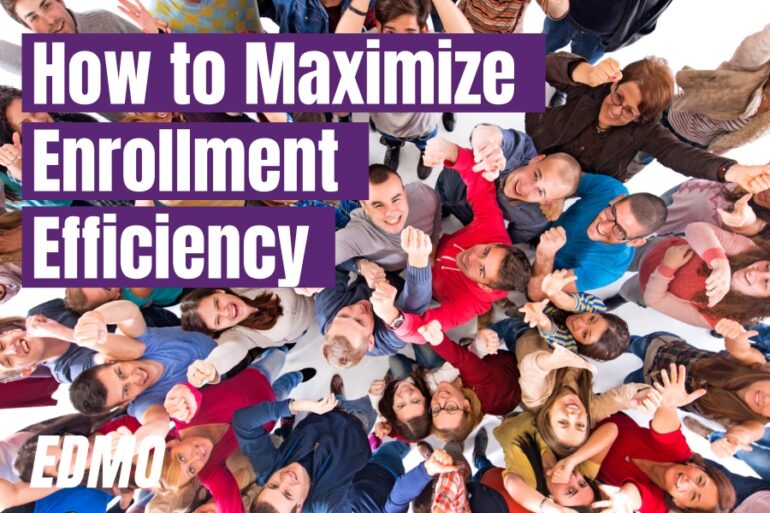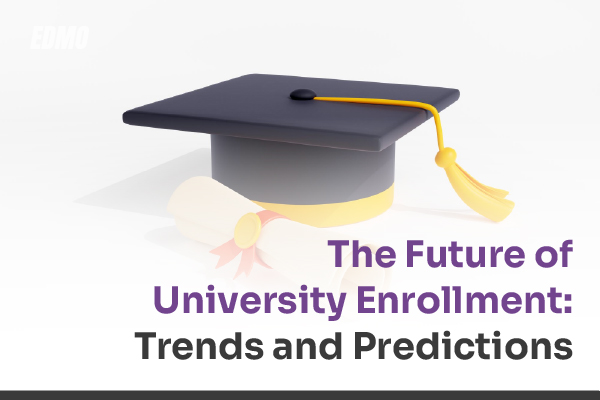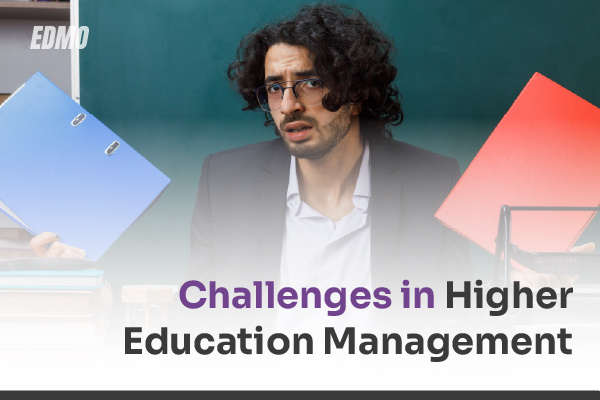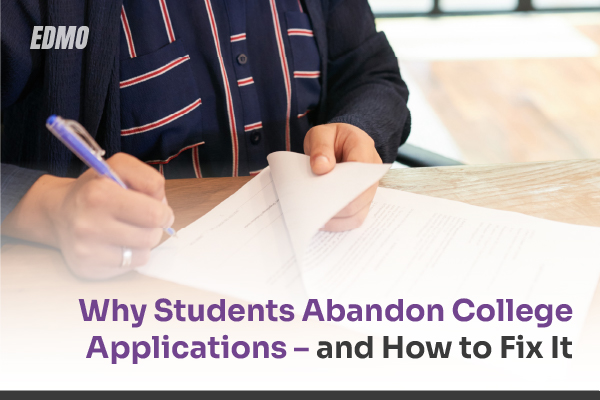Maximizing enrollment efficiency means optimizing the student admissions process to save time and reduce difficulty while ensuring a smooth experience for students and staff.
AI has become a bit of a buzzword in the past few years, but in 2025, we are seeing AI make significant refinements in the education space, especially when it comes to enrollment problems. AI solutions ensure enrollment efficiency by automating tasks like application processing and document verification. AI tools, such as chatbots, provide personalized, real-time support to guide students through the application process, while predictive AI helps colleges interact with potential students. By reducing administrative tasks, AI improves accuracy, speeds up decision-making, and improves the experience of students. This approach answers the question to” “How do you increase student enrollment in university?” By making the admissions process faster, easier, and more engaging for students.
Challenges in Traditional Enrollment Processes
U.S. colleges and universities face many challenges in their traditional enrollment processes that can lead to delays and frustrations for both students and administration staff.
Time-Consuming and Manual Tasks
Traditional enrollment processes involve a lot of manual work, like data entry and document verification, which can lead to delays. For domestic undergraduate applications, rolling admissions take 4-8 weeks, and those with deadlines take 6-12 weeks. International applications take even longer, often 8-16 weeks or more, due to additional verification. Automation can help streamline these tasks, making the process faster and more efficient.
Lack of Personalization
Without AI, enrollment systems often rely on generic communications, leaving students feeling stressed and unsupported. 87% of students value personalized communication in their college decisions, and poor communication can lead to 50% choosing another school.
High Dropout Rates
Inefficient enrollment processes contribute to mismatches and increased dropout rates. Data shows a 5% decline in 18-year-old freshmen enrollment for Fall 2024 compared to the previous year. At selective universities, Freshmen enrollment in a few categories dropped by 16.9%. These figures highlight the need for AI-driven solutions to streamline the enrollment process and improve student retention.
To overcome these challenges and improve the admissions process, maximizing enrollment efficiency through AI solutions is important for improving student experiences.
How AI Improves Enrollment Efficiency
AI-driven enrollment solutions are transforming the admissions process by increasing speed, accuracy, and accessibility. By using automation, predictive analytics, and personalized engagement, AI helps universities attract and retain students more efficiently. Here’s how AI-driven solutions are making an impact:
Predictive and Prescriptive Analytics
AI-driven predictive analytics can forecast enrollment trends and help institutions improve their strategies. However, a survey found that only 40% of administrators use predictive AI for admissions and enrollment, and just 20% use prescriptive AI, indicating a significant chance for growth.
Automation of Administrative Tasks
AI-driven automation can take over repetitive tasks, lightening the workload and enhancing efficiency. At the University of Glasgow, Robotic Process Automation (RPA) has saved over 20,000 working hours across 15 departments by automating tasks such as data entry and document processing. Similarly, EDMO’s Document Intelligence automates the sorting, analysis, and evaluation of student applications, reducing manual workload and improving accuracy. By seamlessly integrating with major CRMs, EDMO ensures faster and more efficient admissions processing.
Personalized Student Engagement
AI chatbots like CSUNny at California State University, Northridge, provide real-time support, helping students with applications, scholarships, and deadlines. These chatbots improve the student experience and streamline university operations. With EDMO’s CI, institutions can enhance engagement and boost enrollment efficiency. Universities using EDMO have increased their application-to-enrollment rate by 5 percentage points.
Increase Diversity & Fairness
With 74% of students believing that college admissions are biased, AI can help create fair enrollment processes by focusing on objective academic and extracurricular achievements rather than traditional enrollment processes.
Data-Driven Decision Making
AI-driven solutions provide universities with valuable information from large amounts of data, helping them to make more informed and strategic decisions. Companies using AI-led processes see 2.5x higher revenue growth, 2.4x greater productivity, and 3.3x greater success at scaling AI use cases, according to Accenture’s 2024 Reinventing Gen AI report.
By using AI-based tools, universities can improve student engagement, speed up administrative tasks, and make data-driven decisions, ultimately maximizing enrollment efficiency and improving the overall admissions process.
Conclusion
Maximizing enrollment efficiency is key for private schools to stay competitive. By simplifying the enrollment process, enhancing engagement, and showcasing your school’s unique strengths, universities can attract more students. Universities using AI-powered enrollment solutions see increased application processing speeds, better student retention, and optimized resource allocation. At EDMO, we empower institutions with AI-driven Conversation and Document Intelligence, automating student interactions and application processing with accuracy. Our solutions help universities streamline enrollment, improve engagement, and make data-driven decisions effortlessly. By integrating AI-driven tools and adopting strategies to increase enrollment in private schools, higher education can overcome traditional enrollment challenges.
Also read: Instead Partners with EDMO to Deliver End-to-End Student Enrollment Services
5 Strategies for Effective Enrollment Management In Higher Education
5 Ways to Boost Employment Success for International Students
6 strategies to foster academic success at your institution







